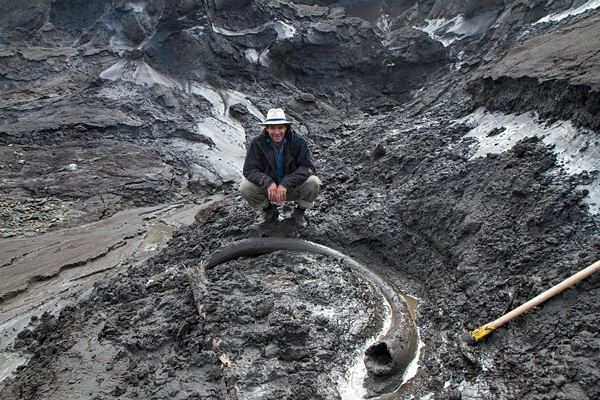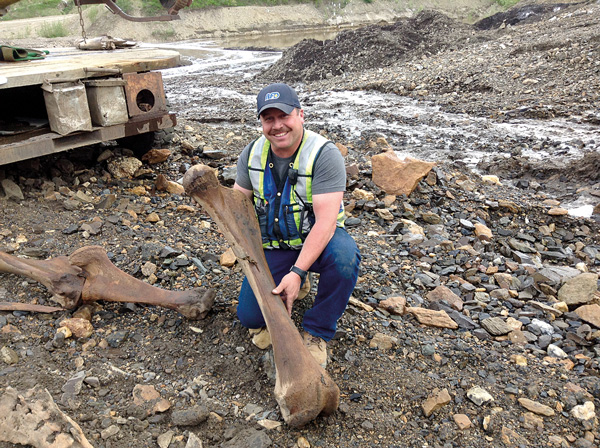Placer mining in the gold fields outside of Dawson City can be pretty monotonous. In the remote Yukon wilderness, independent miners work in small, often family-run groups, gathering tons of dirt and eventually sluicing it for gold. But every now and then these miners make a discovery arguably more valuable than gold dust: the fossilized remains of giant Ice Age beasts.
Grant Zazula, a paleontologist with the Yukon government, travels out to dozens of placer mining sites every summer to liaise with miners about what else they’re finding in their seasonal search for gold. The relationship, he says, is so positive that Zazula and his team are getting thousands of new fossils every summer—more than they know what to do with. But they’re not turning any of them down.

“When the sun is shining you gotta make hay,” says Zazula. And right now, fortune is shining on Yukon’s paleontologists thanks to an active placer gold industry. “We don’t know if that’s going to be the case in the future. Maybe there won’t be as much gold mining 10 years from now. So while they’re doing it we’re gonna make sure these bones are being collected so future generations can study them.”
Placer miners’ operations cover what happens to be one of the most fossil-rich regions in the world. The miners melt down permafrost dirt with huge hydraulic hoses. All the while, Zazula and his team scurry about, picking up bones off the ground and tossing them in burlap sacks. They often don’t have time to digest what they’ve found until the end of the season, when they’re back in the lab in Whitehorse.
To the placer miners, Zazula says the discoveries are a great source of pride. Many of them were children when a biologist named Richard Harington first began visiting the Dawson gold fields in the 1970s, gathering fossil specimens to take back to Ottawa. “They all remember him as this really nice old guy that was teaching them about paleontology. Now these guys have grown up and they run the mine … and they just love being able to contribute to scientific research like that,” Zazula says.

Fossils found at placer mines have furthered what we know about the last ice age and the animals that once roamed Canada’s North. Zazula co-authored a paper this year that turned what scientists once believed about the Western Camel on its head. Using DNA from bones found at a Dawson placer mine, scientists discovered the species is closely related to dromedary and Bactrian camels of the Middle East and Central Asia, rather than the alpacas and llamas of South America, as was previously thought.
Zazula’s team made another exciting discovery at a placer mine this year: the tibia of a flat-headed peccary, a boar-like mammal from the Pleistocene. It’s only the third fossil of that species ever found in Canada.
“We always make sure that it’s made clear to people that if it weren’t for these gold miners, none of this stuff would be known and these fossils wouldn’t be preserved for future generations,” Zazula says. “They’re there to get the gold, and as a result the Yukon has this incredible source of extinct Ice Age mammals and fossils from the Ice Age.”
Let’s hope the placer miners keep it up.
Fossil mining by the numbers:
6,000-7,000:
Individual bones collected from Dawson placer mining sites during the summer of 2015. (5,000 were collected in 2014; 2,782 in 2013)
4
People working in the Yukon Paleontology Program at its height in the summer, including Zazula, his two field assistants, and a summer student.
25,000
Kilometres driven by the Yukon paleontology team in an average summer season along remote dirt roads outside Dawson.
111
Dawson area mine sites recorded as having fossils. Paleontologists visited 40 this summer. most are within a 100-km radius of Dawson City.
133
Pleistocene vertebrate fossil species (fish, amphibians, birds and mammals) found in the Yukon, which are between 10,000 and 1.6 million years old.









